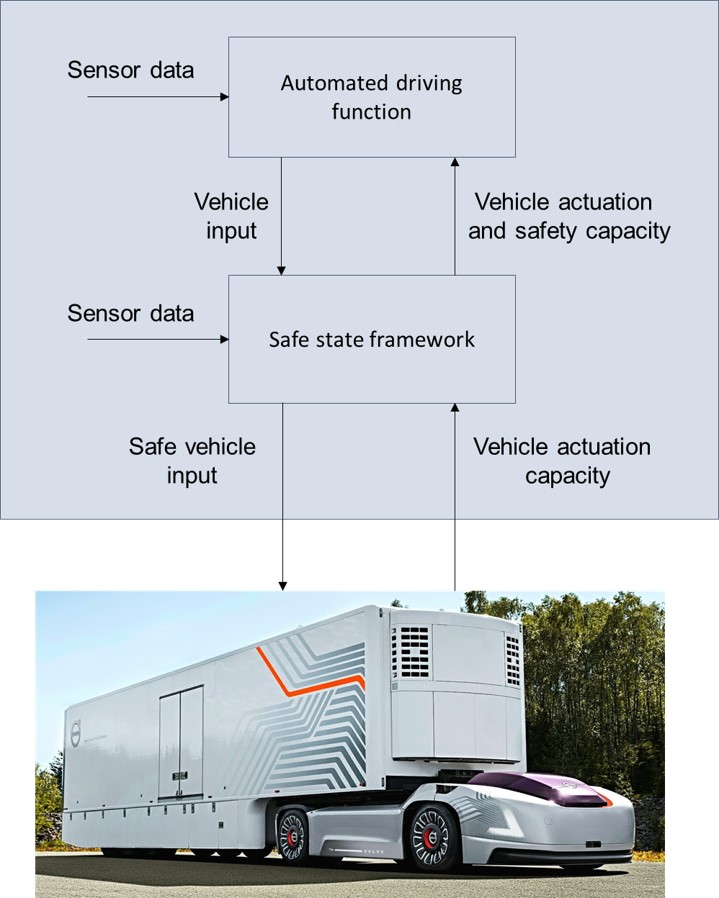Safety net for trucks - new project to help ensure safe automation
SAFER has a new project in its portfolio; High integrity system for ensuring safety of automated driving features. The project is looking into potential systems for monitoring driving, detecting hazards and intervening before active safety systems e.g. braking systems need to be activated.
Autonomous vehicles need to be industrialized in high volumes in the not so far future. These vehicles will need to be flexible towards incorporating updated control algorithms at a high pace; as soon as there are improvements in transport efficiency or to the intended area of operation, these improvements should be used in as many vehicles as possible for maximum benefit. However, it is a challenge to verify that the risk is tolerable ans that the autonomous vehicle does not create a situation that can be harmful. Therefore, a system in use must be robust towards receiving updates to some parts of the system in the aspect that these updates cannot compromise the verified safety of the system yet provide improved functionality. One way of achieving the mentioned flexibility and robustness is to separate the system that ensures the safety of the vehicle from the components that conduct the tactical and strategic mission planning and allow changes only to the latter parts. The hypothesis is that this can be done such that updates to an autonomous vehicle can be implemented at a higher pace than what would be possible if the process that verifies the underlying safety of a system is applied each time. The underlying assumption is that it will be hard to verify the safety of a high complexity system that can do virtually anything, whereas a low -complexity system responsible for avoiding critical errors can be verified more easily and be unchanged for a longer period of time.
Some of the research questions that will be addressed in this project:
- Under which conditions can the “safety monitor” be responsible for assuring safety?
- What guarantees does the system give?
- What information needs to be transmitted between the systems?
- Can there be traceability of a particular action?
- What do the models look like inside the “safety monitor”?
This associated project will be placed in SAFER’s Research area Systems for accident prevention and automated driving. The project started in April last year and will continue until May 2024. Funding comes from Vinnova and the partners in the project are Volvo Group and Chalmers.

